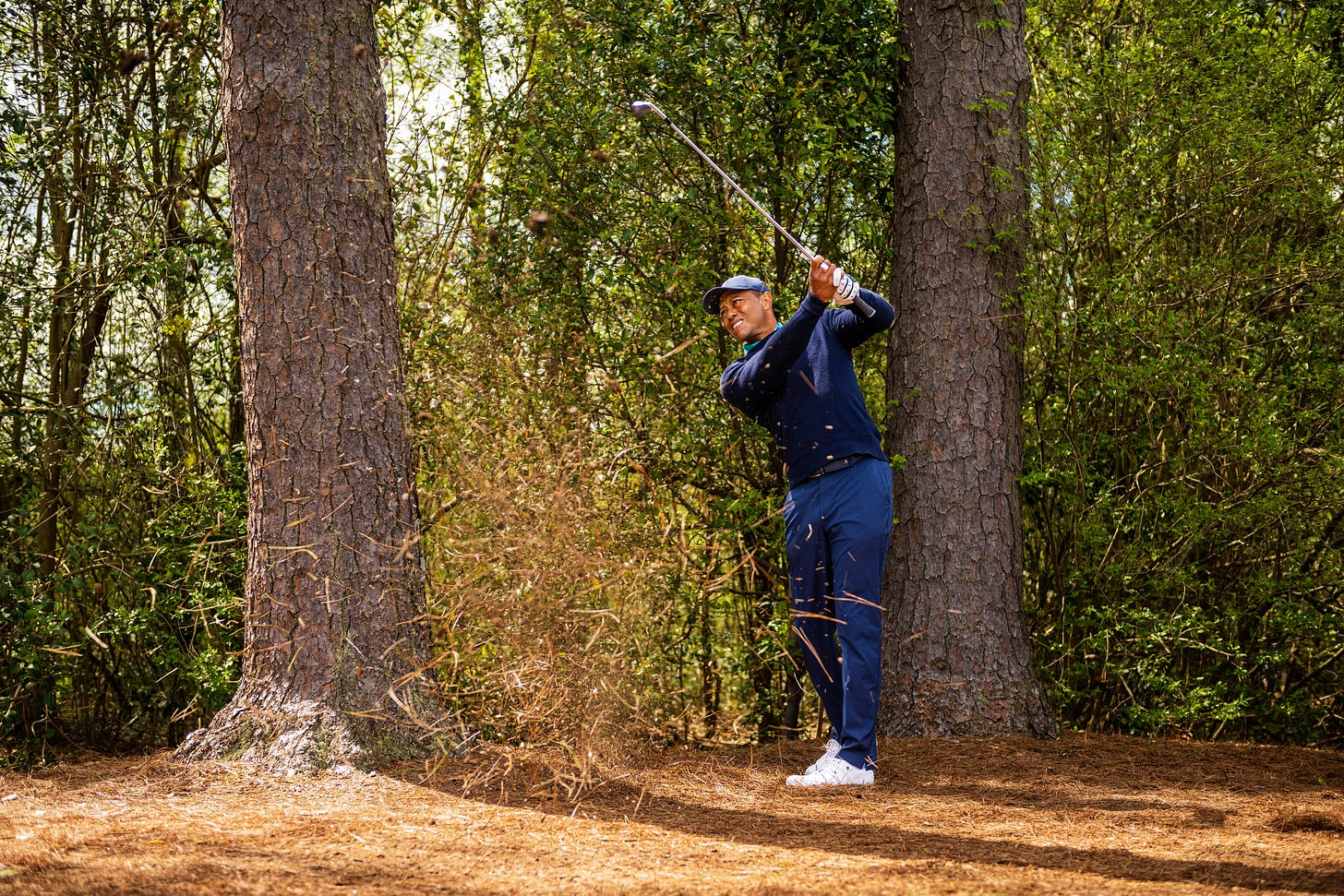Recently, I was thinking about how, if I caddied for a friend, I could help them lower their scores simply through better course management. I believe I could help a mid-to-high handicapper shave at least five strokes if not more.
Here's how I would do it:
How to Lower Your Scores:
FORGET THE FAIRWAY. Aim Away from Trouble
FORGET THE FLAG. Aim to the Middle of the Green
Take More Club!
Play Anything over 15 ft as a Lag Putt
Putt it, Don’t Chip
AVOID TROUBLE AT ALL COSTS
That’s the bulk of it. If you follow each of these, I’m confident that, on average, you will shoot lower scores.
If your not fully convinced, check out below for more detail.
Tee Shots
The goal of your tee shot should be to hit it as far as possible while avoiding trouble. If there is water on the right, avoid it at all costs! That might mean shifting your aim to include the left-side rough. That’s fine!
This is what I said in Edition #4 on base rates:
“Forget fairways hit. Overrated. The goal off the tee is to stay out of trouble and hit it as far as you can while achieving goal #1. As you can see in the graphic, hazards like trees, bunkers, and obviously OB/Water cost golfers > 1 shot. But hitting it in the light rough is only .3 shots. As mentioned in Daily Divot: Finding Fairways, a top amateur golfer has a 70-yard dispersion left to right with the driver.”
OB or in the water off the tee will kill your score. Stack the odds by keeping the ball in play. Don’t worry about the rough unless you're playing the US Open.
Approach Shots
I wrote about Approach Shot play extensively in How to Hit More Greens in Regulation. Click the link for the full breakdown. But here’s the gist of it:
Forget the flag. Aim for the center of the green, with a slight bias towards the back yardage
Take More Club
Avoid Trouble
GIR’s are the key to lower scores. It goes hand in hand. Aiming at the middle of the green gives us the highest odds of getting on the putting surface.
We also want to take more club, because amateurs are across all handicaps are rarely long (5% of the time), and golfers above a 10 handicap are short over 40% of the time.
Finally, avoid the trouble! Bunkers in front? Aim further back. On the left side? Shift your target right.
I think this is one of the hardest things for golfers to do. Even when we say we’ll forget the flag, we sometimes subconsciously aim back towards it. But if you commit to it your scores will drop.
Putting
On long putts, our goal should be to avoid 3 putts.
That means focusing on distance control and getting the ball in an imaginary circle around the pin on putts over 15 feet.
Most amateurs focus too much on break and technique but lose focus on the target and distance control.
Pick the break and commit to it. Now, focus on nothing but the target and getting the distance correct.
Chipping vs Putting
I wrote about this already in the piece aptly called Chipping vs Putting.
Lou Stagner of Arrcos Golf recently tweeted that mid to high-handicap players are:
Roughly .10 shots better with a putter from 5 to 15 feet from the edge of the green
.15 to .25 shots better with the putter from 15+ feet away
Also, the worst putts are consistently closer to the hole than the worst chips.
Using your putter as much as possible around the greens = lower scores.
Avoiding Trouble
I’ve already mentioned this multiple times. Avoiding trouble is KEY! It’s hard to accept, but on tee shots, approach shots, and even around the greens, your first concern should be to avoid bunkers, water, and/or OB.
The temptation is there, but you must resist!
Mental Game
As your caddy, the final piece of the puzzle would be to help you with your mental game. And that would entail being intentional and focusing on the current shot.
Being intentional is just stating clearly what we are going to do. Talk it through and commit to the shot. “I’m going 7 iron, aim middle back around 170 yards, towards that tree branch off the left side.”
Focusing on the current shot means we’re not worried about the last shot or trying to play catch up after pulling one left into the trees. We’re going to take our medicine.
The mental game is the hardest part, but you can get better at it (without me by your side) by simply saying your intention out loud and taking each shot in isolation. We must make the best decision for the shot in front of us. Whatever happened before or happens after is irrelevant.
The hard part, of course, is sticking to it for 18 holes. I’m guilty of getting greedy or not thinking through the shot ahead of time. But it can be done.
Have a Good Weekend
That’s it for this week!
I hope that helped. If you want more information, I highly recommend reading Jon Sherman’s book The Four Foundations of Golf. It’s a masterclass.
As always, feel free to contact me by replying to this email or comment below.
Other Posts on Course Management:
Thank you for reading and subscribing. If you enjoyed this piece, hit the “like” ❤️ button below and share it with a fellow golfer.
Til next time.














